Late last November, after his University of Memphis Tigers beat Marshall in their regular-season finale to clinch a winning record and the football program’s third-straight bowl berth, head coach Tommy West was asked a straightforward question: “Was this season your best coaching job?”
West responded, “Well, I think I do a good job every year, so that’s hard to answer.”
One bowl win, one departed All-American, and one open-heart surgery later, the Tiger coach enters his sixth season on the Memphis sidelines as the fourth-most successful coach in the program’s history, his 32 wins trailing only Billy Murphy (91), Ralph Hatley (59), and Zach Curlin (43). But with success come expectations, and Tommy West realizes the hill gets steeper as those expectations rise. What can Tiger fans expect from their football team this fall? And where exactly is the program headed, long-term? Who better to ask than the coach himself?
First of all, we’re glad you’re here for year six. How’s your health?
Tommy West: My health is good. I’m getting my strength back. I’m trying to exercise in the heat of the day. I probably won’t have it all back before the end of the season, but I’ll be pretty close. The doctors have told me it takes about eight months to a year, but I don’t feel like anything’s holding me back. Larry Kuzniewski
Larry Kuzniewski
Tommy West
The hardest thing right now is my diet. Your metabolism is so slowed down by the medications. And I’ve got to lose about 15 pounds. I can almost gain weight eating lettuce. I tell [the doctors], ya’ll want me to lose weight and my heart beats about once every third day. I hear it tick. That’s been the hardest part. Normally, once I start exercising, I drop weight and I’m ready to go in August.
Did the surgery alter your thinking at all about coaching?
Oh yeah. I don’t know if it was the surgery or the time I had just sitting in a chair, but you do a lot of thinking. At 51 years old — barely out of my 40s — what am I doing sitting up here in a hospital with my chest split open? It made me stop and appreciate more. It made me realize how much I really do enjoy doing what I’m doing. I like living in Memphis. I like coaching at the University of Memphis. I think [our program] can be bigger and better than it is.
You don’t come across as one of those over-the-top intense coaches who would seem prone to heart problems.
I’ve always taken great pride in being the duck going across the water that looks like there’s no effort at all, but if you look under the water, he’s paddling like crazy. I run pretty tight. I stay pretty low-key off the field, but when it comes time to work, I’m pretty intense with it. On practice and game days, I’ve got to find a way to channel the intensity.
Can the loss of one player — DeAngelo Williams — constitute a rebuilding year?
Yes, when you look at the number of yards and the number of points and the leadership, I think it can. It’s a double-edged sword. Nobody loves DeAngelo more or respects what DeAngelo’s done more than Tommy West. On the other hand, it really irks me to hear that we’ve been in three bowls in a row just because of DeAngelo Williams. There are a lot of other kids out there who have busted their tails, opened holes for him, made tackles when we weren’t gaining yards, and kicked field goals.
The loss for us is the combination of [placekicker] Stephen Gostkowski and DeAngelo. Now, add those points up! 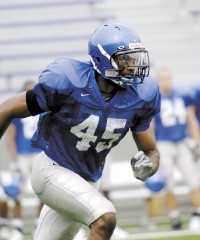 Larry Kuzniewski
Larry Kuzniewski
Senior free safety Wesley Smith
We go back now, and if we built this program the right way, someone else will step up.
I feel really fortunate to have coached him and have him here. I loved watching him play, but even more than that, I loved watching him practice. He was a great practice player, like most of the great ones are. It’s no coincidence that Tiger Woods is one of the hardest workers. Michael Jordan was one of the hardest practice players. Walter Payton. Jerry Rice … All the greatest of the greats were among the hardest workers there have ever been, and that’s no coincidence. DeAngelo grew his game. It was a lot of fun.
What kind of long-term impact do you feel Williams will have on your program?
He’ll be talked about forever. He opened people’s thought process to “I can go to Memphis and accomplish every goal that I ever wanted to accomplish.” He came here, he led the nation in rushing, he was a Heisman Trophy candidate, he made All-America teams, he went in the first round [of the NFL draft]. He did all the things that we told him he could do and the SEC schools told him he couldn’t do if he came here. And he had a great time doing it. He endeared himself to a city. Anybody that’s famous, you can call by one name: Tiger, Shaq, Madonna, Cher. In Memphis, if you say DeAngelo, nobody says, “Who?”
What should Tiger fans expect from this year’s
running game?
That will be one of the keys to our team. We’re not going to have one guy run for 2,000 yards. But if we can keep our rushing game where it was with a complement of running backs, quarterbacks, and wide receivers running the ball, we’ll be fine. That’s how we have to overcome the loss of 2,000 yards from one guy. We have a talented group of wideouts, and we hand them the ball on reverses a lot, so they’re going to have to get us some yards. Anytime you lose a great player, you’ve got to be as good or better as a team.
What about the quarterback position?
The misfortunes of a year ago are going to be positives for us this year. Our transfer, Martin Hankins, went through spring practice. Patrick Byrne should be totally healthy, so he’s in the mix. Will Hudgens has lost some weight and looks good.  Larry Kuzniewski
Larry Kuzniewski
West commands his troops on the practice fields
The experience we have will help us. [Note: West named Hankins his starting quarterback as this issue went to press.]
Lots of experience back on the offensive line. This has to help break in the new backfield.
I think we’re two-deep on the offensive line. I expect us to be good there. We have to be good there.
A football team often finds leadership from its offensive linemen. Is that the case with your team?
Well, I’ve always said that when your linemen are the leaders of your team, you have a very unselfish team. When your skill guys are the leaders, a lot of times you have a selfish team. Skill guys want the ball.
We are a very quiet football team. We don’t have a lot of mouth, and that’s fine with me. Part of that is we’ve recruited our kind of guys. I’m not a big talker on the field. I want our work to do our talking. This is a team that is going to be led by examples more than vocals.
On the defensive side of the ball, you lost some big hitters in Tim Goodwell, Carlton Baker, and O.C. Collins. Who are some of the players we’ll see filling the void?
Wesley Smith is the first one. This is the first time Wesley has ever been healthy through spring ball. He’s a tall, thin guy, and he’s been nursing shoulder injuries. But he looks really good. Next is our defensive line. We’ve got some additions there who I believe will make plays for us — Corey Mills, Clint McDonald, Jada Brown. And we get Rubio Phillips back. Those guys are capable of making plays. They’re a little bit quicker, and they just make things happen. Quinton McCrary is back from injury at linebacker, and Rod Smith is moving from safety to linebacker.
I anticipate our defense being a lot better. We ended last season playing pretty good defense after a stretch of playing poor defense. It’s critical that our defense is good from the start.
Talk about Wesley Smith. He’s flown under the radar, with Danny Wimprine and Williams earning so many headlines the last three years. Four-time all-conference players don’t come around often.
No, and barring injury, he’s probably going to [be all-conference] again. Wesley has been a very consistent, solid player. He’s a very quiet guy, leads by example, just does his job. He has really been a solid football player for us. And he’s played banged up.
Your special teams are going to miss Stephen Gostkowski’s placekicking, but you have one of the finest punters in C-USA — Michael Gibson — returning.
I think we’ve got one of the best punters in the nation.
Now, a casual fan might say if your punter is a star, you’ve got a problem.
Yeah, we hope he never gets on the field. But he can change the game, change field position for us. Overall, our kicking game is going to be better. We’ll be as good or better on coverage, and the next phase is to get better at return teams.
As far as the kicker goes, it’ll be interesting to see how it plays out. We have Trey Adams, Kittrell Smith — and Patrick Byrne has kicked. We’ve got some choices, and that’s the good thing.
What has pleased you most over your first five years coaching the Tigers?
The class of the program. We’ve seen what this can be. Our fans, our support. I think it still can be better. To end the season two years in a row with the last home game drawing over 40,000 … My first year, I think we had about 12,000 for the last game.
Also, the way this is being done. We’ve got class people, from top to bottom. We graduated 20 of 22 this year. We had eight seniors another year and graduated seven. We’ve done it our way, and it’s worked. I’m proud that we have a product that’s not only exciting to watch on the field, but it’s first-class off the field, too. When I go to bed at night, I don’t worry about where my guys are. Now, they’re kids; they’re 19, 20 years old. We’re not immune [to trouble]. But I hope our fans appreciate the kind of program they have. I know winning’s the bottom line. I’m not trying to hide that. And I’m extremely proud of 24 wins in three years. But I’m equally proud of how we’ve done it.
The worst thing, to me, would be to lose with bad people. How miserable would that be? I’m not going to be around a bunch of kids that I don’t like being around.
We’ve changed the face of this program. The truth is, we were not looked at as a first-class Division I program when we started. We had a little bit of the outlaw-ish image: “If I can’t go to Ole Miss or Alabama or Tennessee, then I’ll stay home and go to Memphis.” That face is changing now. There’s a lot more local talent — from all over Shelby County — coming to [the U of M] now. And that’s for the entire school, I mean. I’d like to think [our football program] has had something to do with that.
When we signed Scott Vogel, he was one of the first private-school players we ever had here. Now, you look at all the Christian Brothers players … It wasn’t like that when we started. Kids just didn’t view us as an alternative. Maybe for city kids, but county kids thought otherwise.
When we first started, our facilities were not first-class. Our locker room was horrible. When it rained, the roof leaked. We had a team that was a bunch of mouth, and they were losing. Nobody wants to hear a guy talking trash while he’s getting the stew beaten out of him. I hated it. That’s not what our program’s going to be viewed as. That’s what I’m most proud of. We’ve changed the perception of an entire city.
How do you feel about the expanded 12-game schedule? And what does this say about the NCAA’s reluctance to have a Division I-A playoff because of “too many games”?
I think it’s good for the game. The length of our season is not a problem. The length of our games, I believe, is somewhat of a problem. I’ve been an advocate for years to try and shorten our games. We have TV games now that run close to four hours. I believe we can handle the 12 games with our 85 [scholarship players]. We couldn’t go any more. I don’t believe we can go to a playoff with 85.
I think the NCAA needs to do away with red shirts and go to five-for-five [allowing players to play five full years, as opposed to the current four years of eligibility in a five-year window]. It’s a no-brainer. Why not? They’ve got five years to go to school, why not five to play? They can come out early, if they want.
At some point, we’re going to run out of players. Someone’s gonna run out of right tackles. It even affects discipline. Hey, I haven’t got but one more guard, and this kid just got in trouble. I can’t get rid of him, so I’ll do something else. These two freshmen are red-shirted over here — they can’t play — and we’ve got three more games.
How long do you see yourself leading this program?
Until we go to a BCS [Bowl Championship Series] bowl game.
Beyond that?
Well, if it happens next year, I’ll go beyond it. I’m not ready to get out, and I’ve got a son coming into this program. [The BCS] is my ultimate goal. When I said that five years ago, people snickered. I heard the comments: “He might want to try and have a winning season before he talks about a BCS game.” But now, all of a sudden, it’s out there and it’s not so far-fetched. This old coot just might be right.
I can remember when Florida State wasn’t very good. And I can remember when Miami was about to drop football. I pictured this program as being a Florida State, Miami. Obviously, we’re not anywhere near that yet, but we’re gaining on them. When I feel this job is done, and I can turn it over — to one of my guys hopefully — I’ll be ready to move on.
Your name was mentioned with the Ole Miss vacancy, and with success, you’re going to get more and more calls from some of the glamour conferences.
I am very comfortable where I am. You’re never gonna say never, and I’ll be honest with you. If Tampa Bay calls me next year and offers me $5 million a year to come coach their team, there’s a good chance I’m going. Let’s don’t act like it couldn’t ever happen.
But every other coach who has sat in my chair [at the U of M] was trying to get to a Clemson, an Alabama, an Auburn. I’ve already been there. It’s not a burning desire of mine to go back to the bigger budgets, bigger headaches, more alumni. We all have egos, but I am very comfortable where I am. I like my staff. I like my players. For me to ever leave here, it’s going to have to be pretty special.
You talked about changing the face of the program. With DeAngelo in the NFL now, you are the face of this program.
I’m proud of where this program is. We all want to be good. I want to take this program further than it’s ever been taken, further than people ever thought it could be taken. I want to do things in this program that have never been done before, and that motivates me.
This is one of the few places that I’ve been where you feel appreciated, instead of, “Okay, what are you gonna do next year?” Our people still appreciate what we’re doing. It hasn’t reached the point where “eight wins aren’t good enough. When are we gonna win 10?”
Tell us one similarity and one difference between Tommy West and John Calipari.
The similarity would be our passion to win. John has a passion to make Memphis the number-one basketball program in the country. And Tommy has a passion to make Memphis the number-one football program in the country. I think it’s pretty obvious in both of us.
The biggest difference is probably in the amount of money we spend on clothes. His clothes cost more than I make!

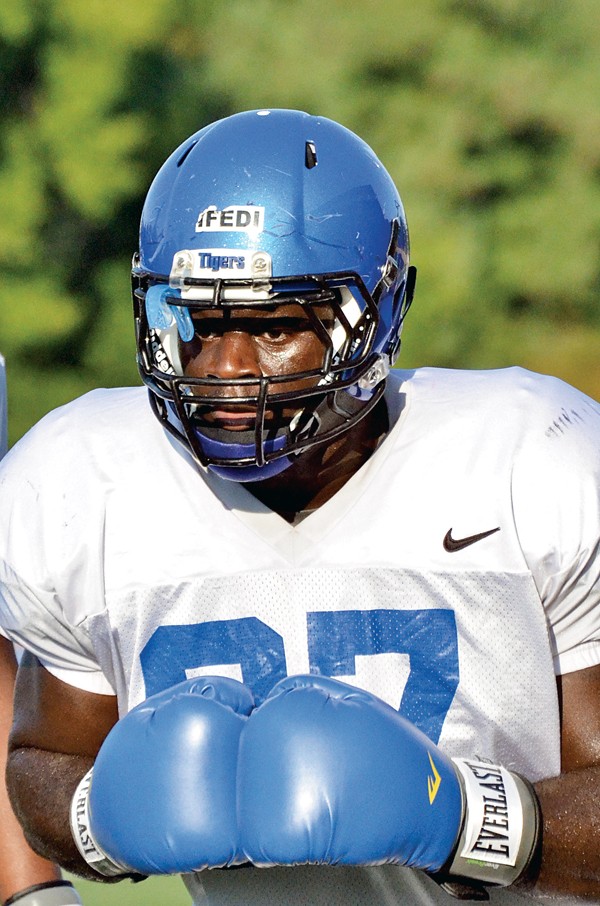 Larry Kuzniewski
Larry Kuzniewski 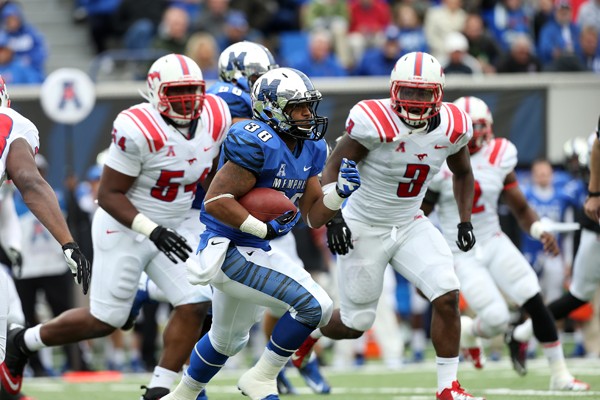
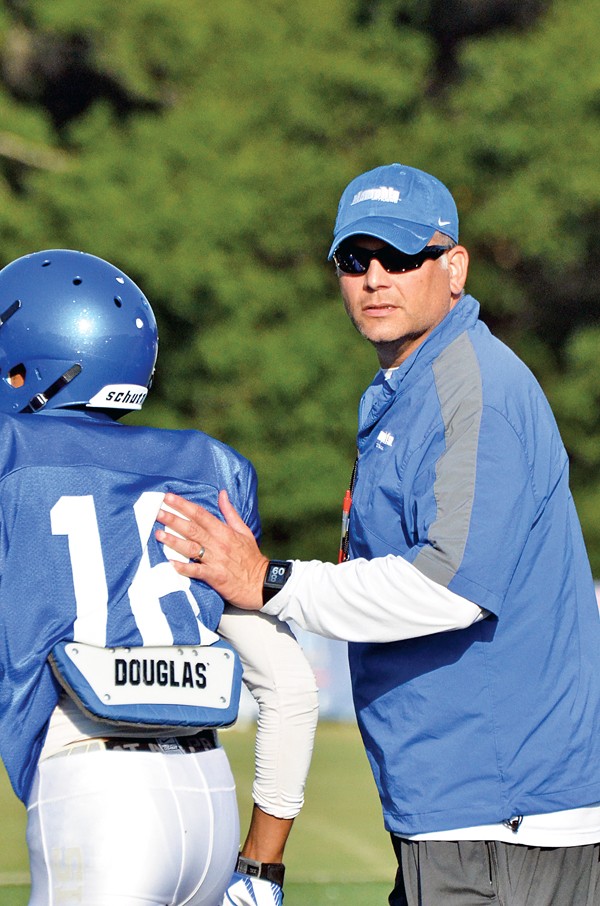 Larry Kuzniewski
Larry Kuzniewski 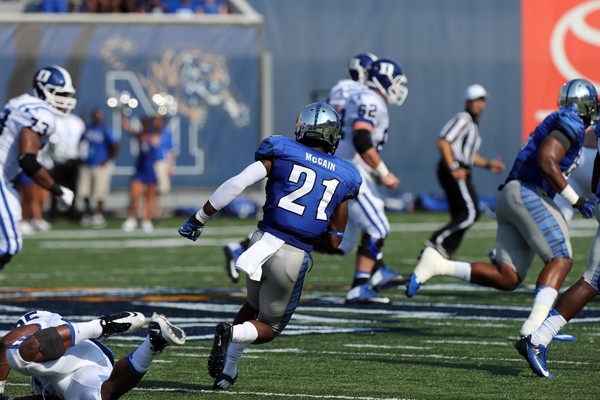 Joe Murphy
Joe Murphy  Larry Kuzniewski
Larry Kuzniewski 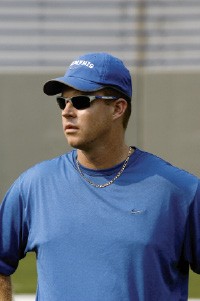 Larry Kuzniewski
Larry Kuzniewski 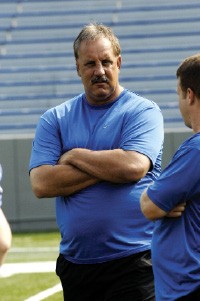 Larry Kuzniewski
Larry Kuzniewski  Larry Kuzniewski
Larry Kuzniewski 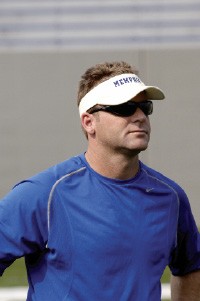 Larry Kuzniewski
Larry Kuzniewski 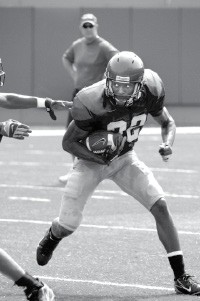 Larry Kuzniewski
Larry Kuzniewski  Larry Kuzniewski
Larry Kuzniewski  Larry Kuzniewski
Larry Kuzniewski  Larry Kuzniewski
Larry Kuzniewski